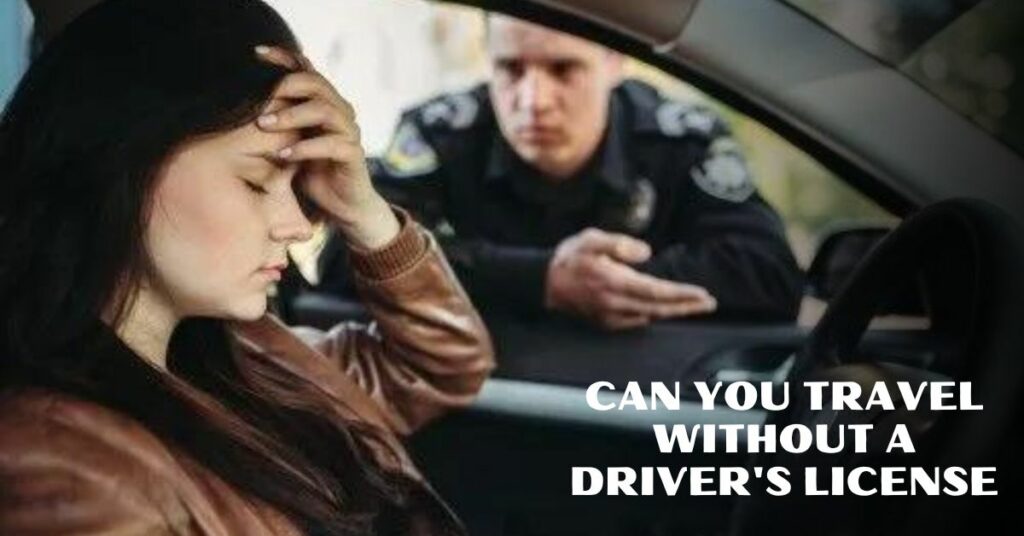As I sit behind the wheel of my car, with the engine revving and the wind blowing past me, I can’t help but feel a sense of freedom. The open road ahead of me, stretching out as far as the eye can see, beckons me to embark on a journey.
But is this really just driving or is it something more? What’s the difference between driving and traveling?
To me, driving is simply getting from point A to point B. It’s a means to an end – a way to transport myself and others to different destinations. But traveling? That’s something else entirely.
Traveling is about exploring new places, experiencing different cultures, and immersing yourself in all that the world has to offer. It’s about taking in the sights, sounds, smells, tastes, and sensations of your surroundings.
So what sets these two activities apart? Let’s take a closer look at their definitions and key differences.
Definition of Driving
You’re probably already familiar with the feeling of being behind the wheel and cruising down the open road, but it’s important to understand that driving is more than just turning a steering wheel. Driving involves a set of techniques and skills that allow you to control your vehicle safely and efficiently.
These techniques include things like accelerating, braking, turning, changing lanes, and following traffic signals. Proper driving safety is also crucial in order to prevent accidents on the road.
To practice good driving safety, you should always wear your seatbelt while operating a vehicle and never drive under the influence of drugs or alcohol. It’s important to follow speed limits and maintain a safe distance from other vehicles on the road.
Defensive driving techniques can also help reduce your risk of getting into an accident by anticipating potential hazards before they occur.
Now that we’ve covered some basic aspects of driving, let’s take a closer look at what it means to travel.
Definition of Traveling
When you’re on a trip, it’s all about the experience of exploring new places and immersing yourself in different cultures. That’s why I prefer traveling over driving. Traveling allows me to embrace spontaneity and take my time to soak up everything around me.
I can stop at a roadside stand and try some local cuisine or wander down an unknown path without worrying about time constraints. One of the benefits of slow travel is that it gives you the chance to fully appreciate your surroundings.
When you’re not rushing from place to place, you have more opportunities to interact with locals, learn their customs, and gain insights into their daily lives. Even if you end up spending an entire day in one spot, there’s always something new to discover. This approach may not be for everyone, but for those who want a deeper connection with the places they visit, traveling is definitely worth considering.
As much as I love traveling, there are key differences between driving and traveling that shouldn’t be overlooked.
Key Differences Between Driving and Traveling
If you really want to fully immerse yourself in the experience of exploring new places and cultures, ditch the car and embrace the spontaneity and slow pace that only true travel can offer. While driving may seem like a convenient option for road trips, there are key differences between driving and traveling that make all the difference.
Here are some ways driving differs from traveling:
-
Driving vs flying: When you fly to your destination, you arrive at your location quickly but miss out on experiencing the journey. Driving allows you to take in your surroundings along the way.
-
Pros and cons of road trips: Road trips can be a great way to bond with friends or family, see beautiful landscapes, and make memories. However, they can also be tiring and stressful if not planned properly.
-
Embracing spontaneity: Traveling allows for more flexibility in itinerary planning. You can change plans on a whim without worrying about missing flights or hotel reservations.
While there are benefits to both driving and traveling, it’s important to weigh the pros and cons before deciding which is best for your next adventure.
In the next section, we’ll explore some of the benefits of driving specifically.
Benefits of Driving
Get ready to hit the open road and experience the freedom of exploring new places at your own pace with the many benefits of taking a driving trip. One of my favorite things about driving is being able to explore nature and discovering hidden gems in places that I may have never thought to visit before. Whether it’s a scenic drive through a national park or finding a hidden waterfall, there’s something special about being able to take in all the beauty around me from behind the wheel.
Another benefit of driving is connecting with locals and trying new cuisines. When I travel by car, I’m able to stop at local restaurants and food stands along the way, which allows me to try unique dishes that I may not find anywhere else. Plus, meeting locals gives me insight into their culture and lifestyle that I wouldn’t get if I were just passing through on a plane or train. While there are many benefits to driving, traveling by other means also has its perks.
Benefits of Traveling
I absolutely love traveling! It’s an incredible opportunity to expose yourself to new places and cultures that you wouldn’t experience otherwise.
Not only that, but it also offers endless opportunities for personal growth and learning.
Exposure to New Places and Cultures
You’ll discover a whole new world and broaden your horizons when you hit the road, experiencing different cultures and perspectives as you go.
One of the biggest benefits of traveling is having immersion experiences in diverse places. You get to witness unique ways of life that you wouldn’t have known otherwise, such as trying exotic foods or attending traditional festivals. Cultural exchanges like these allow us to see the world through a different lens and gain a deeper understanding of other people’s beliefs and values.
Moreover, exposure to new places and cultures can also challenge our own biases and preconceptions, helping us grow as individuals. By breaking down barriers between ourselves and others, we become more open-minded, adaptable, and empathetic towards those who are different from us.
These skills are invaluable not just for travel but also for life in general. So if you’re looking for an adventure that will broaden your perspective while also providing opportunities for personal growth and learning, traveling is the way to go!
Opportunities for Personal Growth and Learning
Traveling offers a chance for personal growth and learning that can’t be replicated by simply driving.
When we travel, we expose ourselves to new environments, cultures, perspectives, and experiences that challenge our preconceived notions and broaden our understanding of the world. It’s through this process of self-reflection and personal development that we can learn more about ourselves while expanding our knowledge of the world around us.
To fully immerse oneself in a new culture while traveling, there are several opportunities for learning and cultural immersion available. These include:
- Participating in local festivals or events
- Trying traditional cuisine
- Visiting museums or historical sites
- Learning a few key phrases in the local language
- Engaging with locals through conversation or community activities
By taking advantage of these opportunities, travelers can enhance their overall experience and gain a deeper appreciation for the places they visit.
But how can we enhance our driving experience?
How to Enhance Your Driving Experience
I always love a good road trip, and there are a few things I like to do to enhance my driving experience.
First, planning scenic routes is key. It adds an element of natural beauty to the drive and can break up the monotony of long stretches on the highway.
Second, making frequent stops helps me stretch my legs and explore new places along the way.
Lastly, incorporating cultural experiences, like visiting museums or trying local cuisine, can make for unforgettable memories on any road trip.
Planning Scenic Routes
As I plan my route, I always consider the scenic options that’ll add depth and beauty to my journey. Scenic photography’s one of my hobbies, and there’s nothing more fulfilling than capturing stunning landscapes while on a road trip.
Route planning plays a significant role in achieving this goal, as it allows me to choose roads that’re known for their breathtaking views. When selecting a scenic route, I research the area beforehand to ensure that there’re plenty of photo opportunities along the way.
Some things to consider include parks, lakes, mountains, and historical landmarks. By incorporating these elements into my itinerary, I can capture not only gorgeous scenery but also pieces of history and culture unique to each location.
And with careful planning, making frequent stops becomes an enjoyable part of the journey rather than an inconvenience.
Making Frequent Stops
To fully appreciate the beauty of your scenic route, you should make frequent stops to capture stunning landscapes and explore historical landmarks. The benefits of frequent stops are many: they give you a chance to stretch your legs, take in local sights and sounds, and experience new cultures. Plus, taking time to stop along the way can help prevent driving fatigue and make the journey more enjoyable.
So how do you plan pit stops effectively? First, research ahead of time for interesting rest areas or attractions along your route. This can include national parks, museums, or unique eateries that showcase regional cuisine. Additionally, be sure to factor in enough time for each stop so that you’re not rushing through them or feeling pressured.
By incorporating frequent pit stops into your journey, you’ll not only break up long stretches of driving but also have an opportunity to create meaningful memories before continuing on with your adventure. In addition to making frequent stops during road trips, another great way to enhance a travel experience is by incorporating cultural experiences into the itinerary.
Incorporating Cultural Experiences
After making frequent stops during my road trip, I wanted to incorporate more cultural experiences into my journey. One way to do this was through trying local cuisine and attending traditional festivals.
I realized that driving from one destination to another only allowed me to see the surface level of a place, but by immersing myself in the local culture, I could gain a deeper understanding and appreciation for each location.
Trying local cuisine was an easy way to experience different cultures while on the road. I made sure to seek out restaurants and food stalls that served regional dishes unique to the area. By doing so, I not only satisfied my hunger but also gained insight into people’s everyday lives and traditions.
Attending traditional festivals was another highlight of my trip because it allowed me to witness cultural celebrations firsthand. From parades with elaborate floats to music performances featuring traditional instruments, these events were an excellent way to immerse myself in the local community.
As I continued on my journey, incorporating more cultural experiences into my road trip made it all the more fulfilling. It reminded me that traveling isn’t just about getting from point A to point B; it’s about discovering new things along the way and gaining a deeper understanding of different cultures.
Understanding these differences is crucial for any traveler because it allows us to appreciate how diverse our world truly is without judgment or prejudice towards those who are different from us.
Conclusion: The Importance of Understanding the Differences Between Driving and Traveling for a More Fulfilling Road Experience
By recognizing the unique aspects of each road experience, you can enhance your journey and find greater satisfaction in your travels. While driving is often associated with efficiency and getting from point A to point B, traveling encompasses so much more than that.
Here are three ways understanding the differences between driving and traveling can lead to a more fulfilling road experience:
-
Mindful driving: When we drive, we tend to focus solely on reaching our destination as quickly as possible. However, by practicing mindful driving, we can appreciate the journey itself. This means being fully present while behind the wheel, noticing the scenery around us, and taking breaks when needed.
-
Embracing spontaneity: Traveling allows for more flexibility and the ability to embrace spontaneity. Rather than sticking strictly to a predetermined route or schedule, travelers have the freedom to take detours or explore new areas at their own pace.
-
Discovering new experiences: By embracing all aspects of travel – not just getting from one place to another – we open ourselves up to discovering new experiences along the way. Whether it’s trying local cuisine or stumbling upon hidden gems off the beaten path, traveling allows for a deeper immersion into unfamiliar cultures and environments beyond what simply driving through can offer.
Frequently Asked Questions
What type of vehicle is best for driving versus traveling?
When it comes to choosing a vehicle for a road trip, the decision often boils down to car vs RV. It ultimately depends on what you’re looking for – comfort or adventure.
If you prioritize comfort and convenience, a car may be the way to go. It’s easier to navigate through cities and find parking spots, plus you have the option of staying in hotels along the way.
On the other hand, if you crave adventure and want to fully immerse yourself in nature, an RV is your best bet. You can camp out under the stars and wake up to breathtaking views every morning.
Ultimately, it all comes down to personal preference and what type of experience you want on your road trip.
How do cultural differences affect driving and traveling experiences?
When it comes to exploring different countries, cultural adaptability is key. Understanding the local customs and traditions can greatly enhance your traveling experience. However, this can be challenging when faced with language barriers.
As someone who loves to travel, I’ve learned that being able to communicate effectively in a foreign country can make all the difference. It requires patience, an open mind, and a willingness to learn from others.
Navigating through unfamiliar territory while respecting the culture of the locals is an art form that takes practice and experience. While driving in a foreign country may seem like a daunting task, it too requires cultural adaptability and an understanding of local traffic laws and customs.
The ability to embrace new experiences while respecting cultural differences can lead to unforgettable adventures both on and off the road.
Can driving and traveling be considered forms of self-care or mindfulness practices?
When it comes to self-care and mindfulness practices, driving and traveling can both be beneficial. As someone who enjoys hitting the open road, I’ve found that driving can provide an opportunity for self-reflection. The act of navigating unfamiliar roads or simply letting my mind wander while cruising down a highway can often lead to important realizations about myself and my life.
Additionally, the mental health benefits of travel are well-documented – taking a break from everyday stressors and immersing oneself in new cultures or environments can do wonders for one’s overall well-being. Whether it’s a solo road trip or an adventure abroad with loved ones, both driving and traveling have the potential to promote personal growth and improve mental health.
What safety precautions should be taken while driving or traveling?
Did you know that in 2019, there were over 38,000 deaths caused by motor vehicle crashes in the United States? That’s a staggering statistic that highlights the importance of taking safety precautions while driving or traveling.
One of the most important things to remember is to always wear your seatbelt. It may seem like a small detail, but it can make all the difference in preventing serious injuries or fatalities in the event of an accident.
Additionally, it’s crucial to avoid distractions while behind the wheel, such as texting or eating, as these activities can take your attention away from the road and increase your risk of getting into an accident.
By staying focused and taking necessary safety measures, we can help reduce the number of motor vehicle-related deaths and injuries on our roads.
How does the cost of driving versus traveling compare, including expenses such as gas and lodging?
When it comes to road trip planning, budgeting for transportation is crucial. The cost of driving versus traveling can vary based on factors like gas prices and lodging expenses. It’s important to research the most fuel-efficient routes and plan overnight stays accordingly to avoid overspending on accommodations.
Additionally, packing snacks and drinks can save money on food expenses during the trip. By carefully considering transportation costs and creating a realistic budget, you can enjoy your road trip without breaking the bank.
Conclusion
So there you have it, the key differences between driving and traveling. While they may seem similar, understanding these distinctions can greatly enhance your road experience.
Whether you prefer the freedom of the open road or the adventure of exploring new destinations, both driving and traveling offer unique benefits.
But I want to leave you with a final thought: don’t just settle for a mundane commute or a typical tourist trip. Embrace the journey and all that it has to offer.
Take detours, explore off-the-beaten-path destinations, and savor every moment of your time on the road. You never know what kind of magic might be waiting for you just around the corner.
Happy travels!

Meet Michael Graham, the main author of SeekTraveler.com. With a wanderlust that knows no bounds, Michael has traversed more than 30 countries across the globe. From sun-soaked Caribbean islands to the ancient marvels of Europe and the captivating charm of Japan, he has witnessed the wonders of diverse cultures firsthand. Michael’s in-depth knowledge and contagious enthusiasm for travel will inspire you to pack your bags and embark on your own extraordinary journey.


